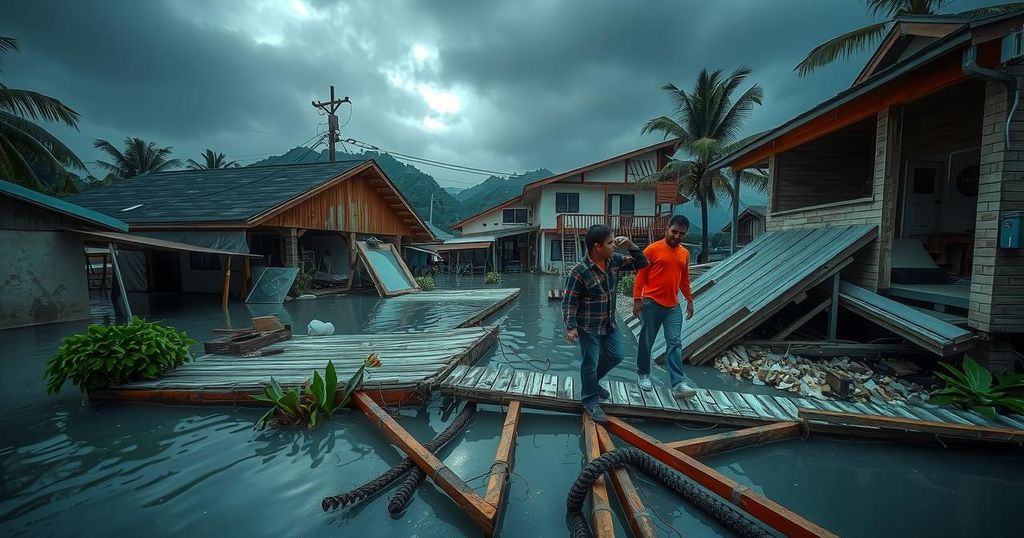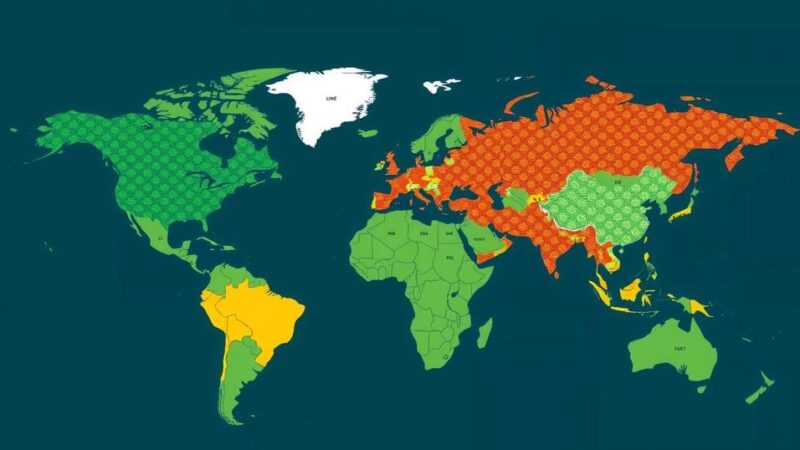Tropical Storm Toraji has inflicted severe flooding in the northern Philippines, marking the fourth major storm to impact the nation in three weeks. Maximum winds reached 80 mph, with rainfall causing critical flooding, particularly along the Cagayan River. Evacuations are underway as another storm approaches, making this a record number of storms hitting the region in a short timeframe. Authorities emphasize the urgent need for disaster preparedness.
Images have emerged depicting the severe impact of Tropical Storm Toraji, also known as Nika, which struck the northern Philippines on Monday, resulting in widespread flooding. This disaster marks the fourth tropical storm to make landfall in the archipelago within a mere three weeks. Toraji hit near San Agustin in the province of Isabela with maximum sustained winds reaching approximately 80 mph and gusts surpassing 110 mph, as reported by the Philippine Atmospheric, Geophysical and Astronomical Services Administration (PAGASA). The storm precipitated between 7 to 15 inches of rainfall in the affected provinces, significantly raising water levels in local rivers, particularly the Cagayan River, which exceeded critical levels at several monitoring points. In response to the flooding crisis, local authorities have initiated evacuation protocols, particularly in Tuguegarao City, where Mayor Maila Ting Que urged residents in vulnerable areas to flee to safer grounds. Approximately 561 families, comprising nearly 1,700 individuals, have been relocated to temporary shelters including village halls, educational institutions, and the homes of relatives. Furthermore, forecasters have warned of an impending storm, dubbed Ofel, which is anticipated to strike the Philippines on Thursday, potentially impacting Cagayan or Isabela yet again, marking the fifth significant storm to hit the nation in under 30 days. Historically, the Philippines is susceptible to tropical cyclones, averaging around 20 a year. Recent storms such as Tropical Storm Kristine (Trami), Super Typhoon Leon (Kong-Rey), and Tropical Storm Marce (YinXing) have collectively caused tremendous havoc, affecting over 4 million individuals across a multitude of provinces. Given their geographical location in the western Pacific, the Philippines faces regular threats from tropical storms, underscoring the importance of effective disaster preparedness and response mechanisms. Concerned officials have expressed the need for enhanced support systems during these times of crisis to mitigate the impact on communities and rebuild efforts following such natural disasters. The current situation emphasizes the persistent vulnerability of the region to climate-related catastrophes, urging a comprehensive approach to disaster management.
The Philippines is a nation frequently beset by tropical storms and typhoons due to its location within the Pacific Typhoon Belt. Each year, around 20 tropical cyclones pass over the country, often leaving devastation in their wake. The country’s geographical and climatic conditions contribute to substantial rainfall, increased risk of flooding, and landslides. In light of recent severe weather events, which have seen multiple storms in quick succession, the urgency for effective disaster risk reduction and timely evacuations is emphasized.
In conclusion, the recent devastation caused by Tropical Storm Toraji has highlighted the precarious situation faced by the Philippines due to recurrent tropical storms. With the impending threat of another storm, authorities are compelled to act swiftly to evacuate at-risk populations and provide shelter for the displaced. The situation calls attention to the necessity for improved disaster preparedness and response strategies that can effectively mitigate the impacts of such natural disasters on vulnerable communities.
Original Source: www.foxweather.com






